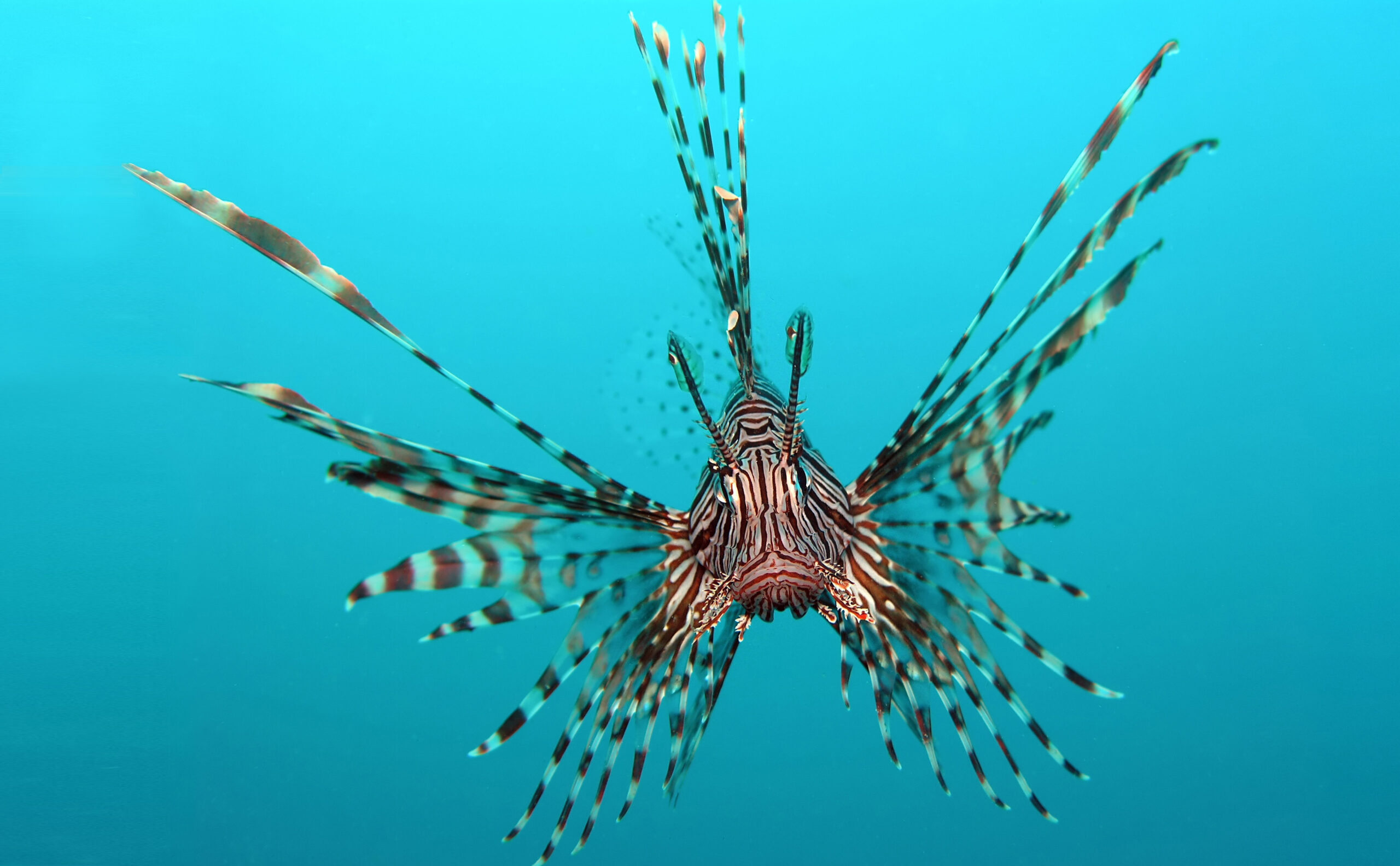Can We Control the Lionfish Population by Hunting and Eating It?

The eat ‘em to beat ‘em strategy might only make a small dent in the pesky fish’s numbers.
Native to the tropical Indo-Pacific region, lionfish have no natural predators in our region, and they’re voracious eaters, which brings harm to the biodiversity of the local fish community. Across the Southeast, officials are encouraging recreational divers and spear fishermen to hunt lionfish so seafood consumers can “eat ‘em to beat ‘em.”
I’ve had the pleasure of eating a variety of small plates featuring lionfish, as prepared by Chef Montero from Elizabeth City, North Carolina. Delish — definitely worth a try! Eradication of lionfish through consumption likely isn’t possible, but could this effort to control the population actually help to keep the numbers down and relieve pressure on the native ecosystem?
Research Need
Non-native invasive lionfish are now well established in the western Atlantic Ocean, Caribbean Sea and Gulf of Mexico. The species consumes and competes with recreationally and commercially exploited species, including red snapper, gag grouper, vermillion snapper and greater amberjack. Mitigating negative impacts of lionfish on marine food webs in the region is a top priority for marine resource managers.
To date, lionfish removal efforts primarily come from spearfishing by SCUBA divers or as bycatch in spiny lobster traps, but there is little data or long-term assessments of these activities on the abundance of lionfish.
What did they study?
Researchers used diver surveys and remotely operated vehicle video surveys to examine lionfish inhabitance throughout the day on eight artificial and eight natural reefs in the northern Gulf of Mexico. Using both survey methods, scientists counted observed lionfish on opposite sides of the reef and inside the reef. With this information, researchers then used a statistical model to estimate lionfish densities on the reef and any changes that resulted from time of day and survey method.
Divers then went spearfishing to remove lionfish at sites where they were not estimating the species’ density: six artificial reefs and nine natural reefs. From this, researchers could estimate lionfish catchability and removal efficiency in both habitat types.
What did they find?
Lionfish densities were approximately ten times greater on artificial reefs than natural reefs. Because of this, researchers estimated that it would take about three removal attempts to deplete artificial reefs of the fish, compared to four attempts for natural reefs.
Anything else?
Time of day did not appear to affect the number of lionfish present on the reef. In addition, data did not show a change in the size of fish on the reef after a removal effort; nor was there a change in the distribution of the fish by size and by type of habitat.
The research team also found that using remotely operated vehicle video surveys often produced lower estimates of the numbers of lionfish than diver surveys, particularly when looking at lionfish on natural reefs.
Reading
Harris, H.E., Patterson III, W.F., Ahrens, R.N.M., and M.S. Allen. 2019. “Detection and removal efficiency of invasive lionfish in the northern Gulf of Mexico.” Fisheries Research 213: 22-32.
The Florida Fish and Wildlife Conservation Commission [grant number 16091] and Florida RESTORE Act Centers of Excellence Program [grant number 4710-1126-00-A] funded this work, along with graduate student support through the National Science Foundation Graduate Research Fellowship Program [grant numbers DGE-1315138 and DGE-1842473].
Summary compiled by Sara Mirabilio
Photo: Lionfish (edited), by Jens Petersen, under the Creative Commons Attribution-Share Alike 3.0 Unported license
The text from Hook, Line & Science is available to reprint and republish, but only in its entirety and with this attribution: Hook, Line & Science, courtesy of Scott Baker and Sara Mirabilio, North Carolina Sea Grant. HookLineScience.com
- Categories:



